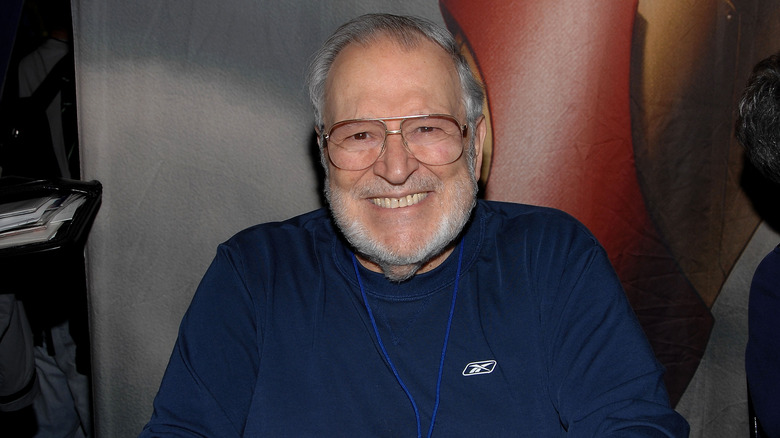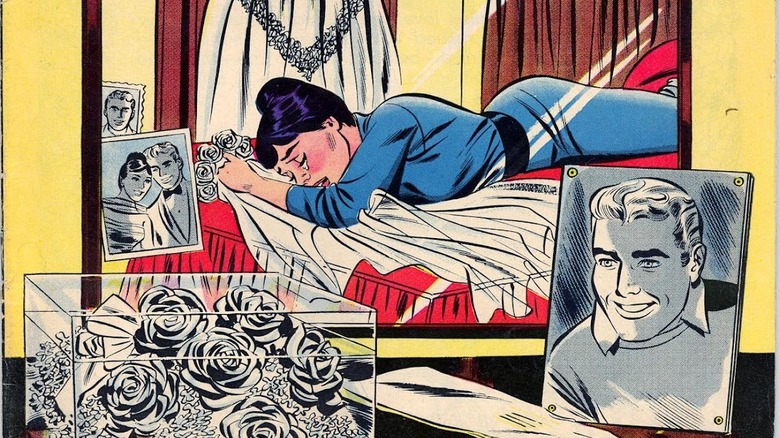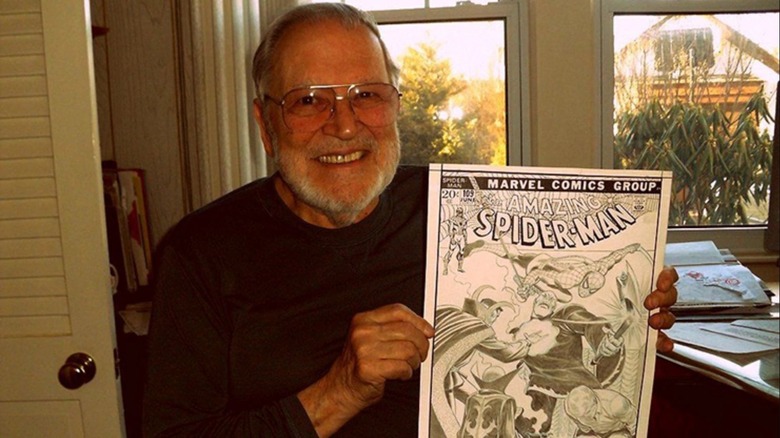John Romita, Iconic Marvel And Spider-Man Comic Book Artist, Has Died
The world of comic books has lost a legend. John Romita Sr. — best known for co-creating Marvel characters such as Mary Jane Watson, the Wolverine / James "Logan" Howlett, and the Punisher / Frank Castle — has died aged 93. His son and fellow comic book artist, John Romita Jr., announced his father's death late on Tuesday on Twitter, revealing that Romita Sr. "passed away peacefully in his sleep." Calling him the greatest man he ever met, Romita Jr. added: "He is a legend in the art world and it would be my honor to follow in his footsteps."
Romita Sr.'s greatest work was on "The Amazing Spider-Man" series, which he took over from the departing Steve Ditko in August 1966 and established a new look for the superhero that became the definitive image going forward. "Romita's transformation of the character redefined the character's look and took the strip in a different direction. It also made him a star artist in the comic book world," comics historian Daniel Herman wrote in his book, "Silver Age: The Second Generation of Comic Book Artists."
Promoted to Marvel Comics art director by Stan Lee thanks to his work on "Spider-Man," Romita Sr. helped define the look of its pages and characters through the '70s and the '80s. During his time at Marvel, he would work on series such as "Captain America," "Doctor Strange," "Uncanny X-Men," and — the first DC and Marvel crossover in 1976 — "Superman vs. the Amazing Spider-Man."
From U.S. Army to Daredevil, via DC Comics
Born January 24, 1930, during The Great Depression, John Romita was raised in Brooklyn, New York City alongside a brother and three sisters by Sicilian-Americans Marie and Victor Romita. He graduated from Manhattan's School of Industrial Art aged 17 and on his birthday, he got his first work as an artist from a very unlikely source: an anesthesiologist at the Manhattan General Hospital. Romita was paid to craft a medical exhibit based on pneumatology medicine, an obsolete study of the "spiritual beings" and "air" sciences.
Romita entered the comics industry in 1949 but was drafted into the U.S. Army in 1951. After showing his art samples, he was asked to make recruitment posters. Meanwhile, he met Stan Lee while working for Timely Comics, the precursor to Marvel Comics. While he mostly did war, horror, romance and Westerns, Romita did get a chance to work on the short-lived "Captain America" revival in 1954. He also married during that time — to Virginia Bruno in 1952, with whom he had two sons, Victor, and John Romita Jr. (1956).
Soon, Romita Sr. transferred over to DC Comics, where he toiled in the romance genre hoping to land a superhero comic one day. But when that didn't pan out, he got a job at a plush ad agency. When Lee heard Romita Sr. had left DC, he took him to a three-hour lunch and offered him "Daredevil." "The first chance he had, he shows me this 'Daredevil' story somebody had started and he didn't like it [...He] asked me, 'What would you do with this page?' [...] I did [...] just a big, tracing-paper drawing of Daredevil swinging. And Stan loved it," he told Alter Ego.
'I did not want to do Spider-Man'
Starting in January 1966, John Romita Sr. spent just a few months on "Daredevil" before he was asked to fill in for Steve Ditko — who fell out with Stan Lee — over on "The Amazing Spider-Man," then the second most popular title for Marvel Comics. "I was hoping against it, believe it or not. People laugh when I say this, but I did not want to do 'Spider-Man.' I wanted to stay on 'Daredevil.' The only reason I did 'Spider-Man' was because Stan asked me and I felt that I should help out, like a good soldier. I never really felt comfortable on 'Spider-Man' for years," Romita Sr. said to Alter Ego years later.
He figured Ditko would return soon — "I couldn't believe that a guy would walk away from a successful book that was the second-highest seller at Marvel" — but when he realized that this new job wasn't temporary, Romita Sr. stopped trying to mimic Ditko and came up with his own style for Spider-Man. It worked, with "The Amazing Spider-Man" surpassing "Fantastic Four" as Marvel's new best seller. Soon, Romita Sr. was designing the look of new characters, from MJ to Rhino, and from Kingpin to George Stacy.
When Lee was promoted to Marvel president in 1972, he made Romita Sr. the art director. For the next two decades, he oversaw the look of Marvel Comics. While his drawing output naturally decreased, he did find the time to contribute. Highlights include Monica Rambeau's Captain Marvel debut in 1982, the 30th-anniversary issue of "The Amazing Spider-Man" in 1992, and an alternate universe of "Spider-Man" characters in 2001's "Spidey: A Universe X Special."
Romita Sr. was inducted into The Will Eisner Award Hall of Fame in 2002. (The Eisner Awards are the comic book world's equivalent of the Oscars.)


